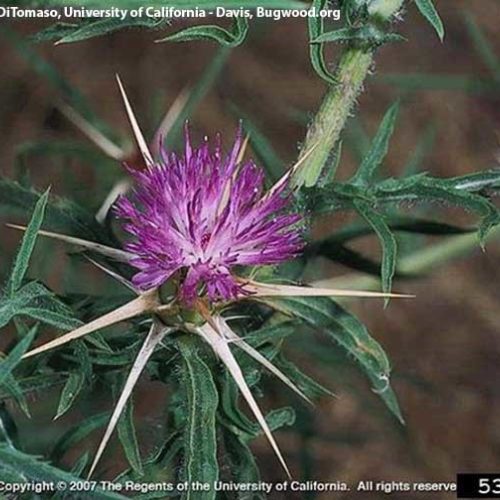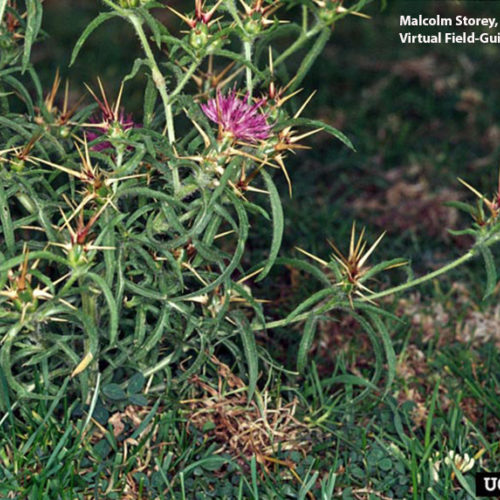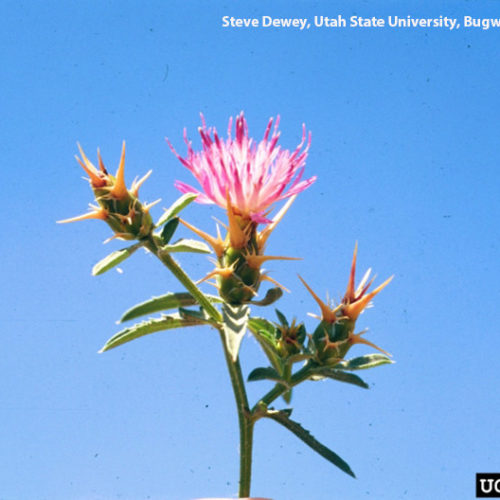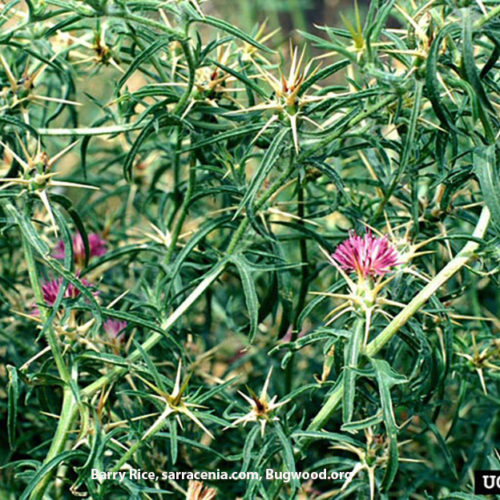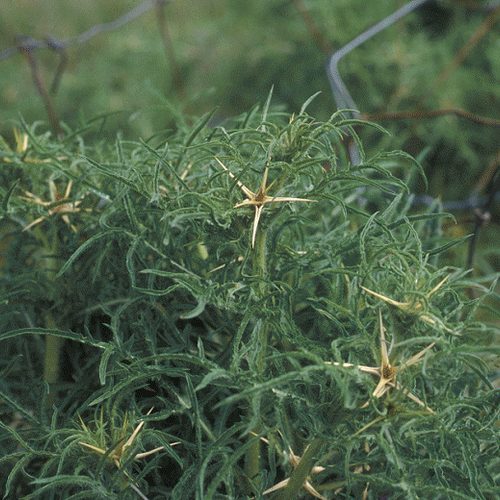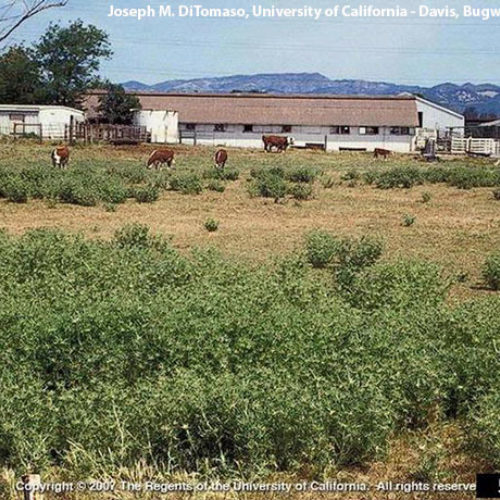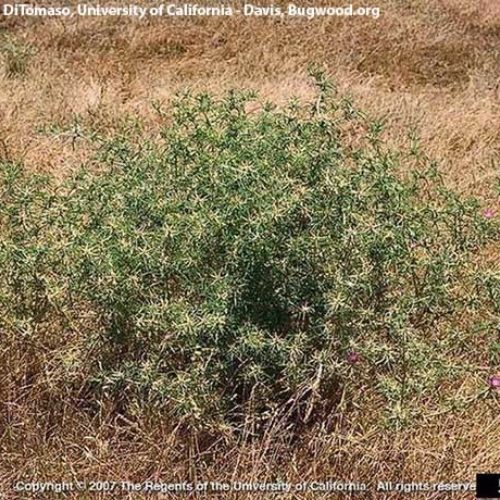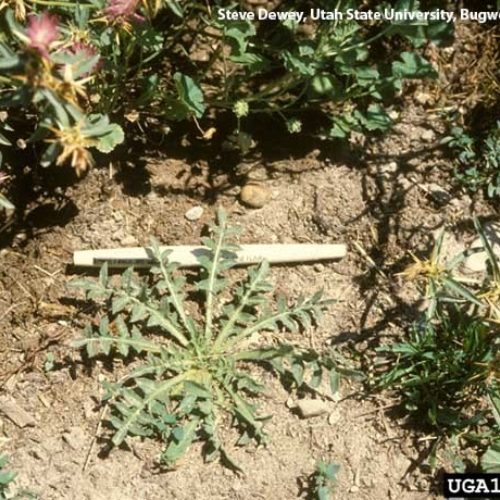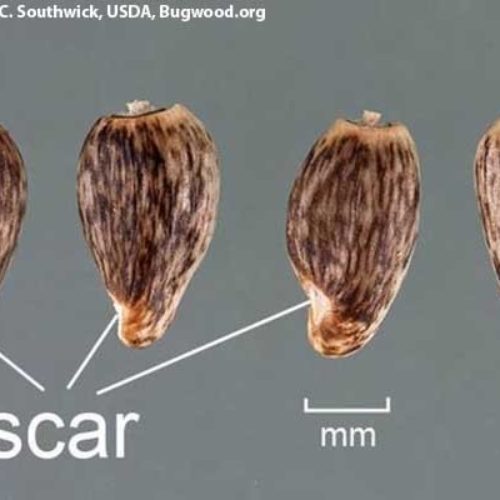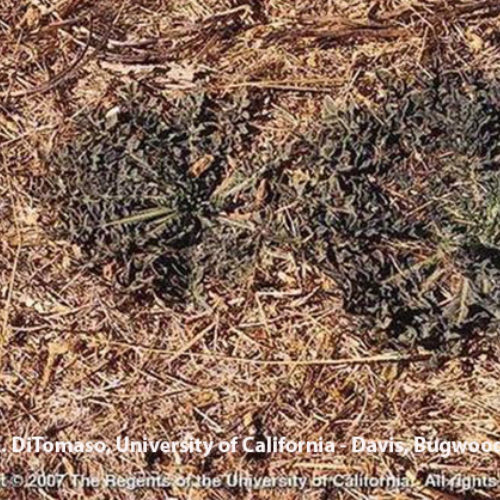Purple Starthistle
Centaurea calcitrapa
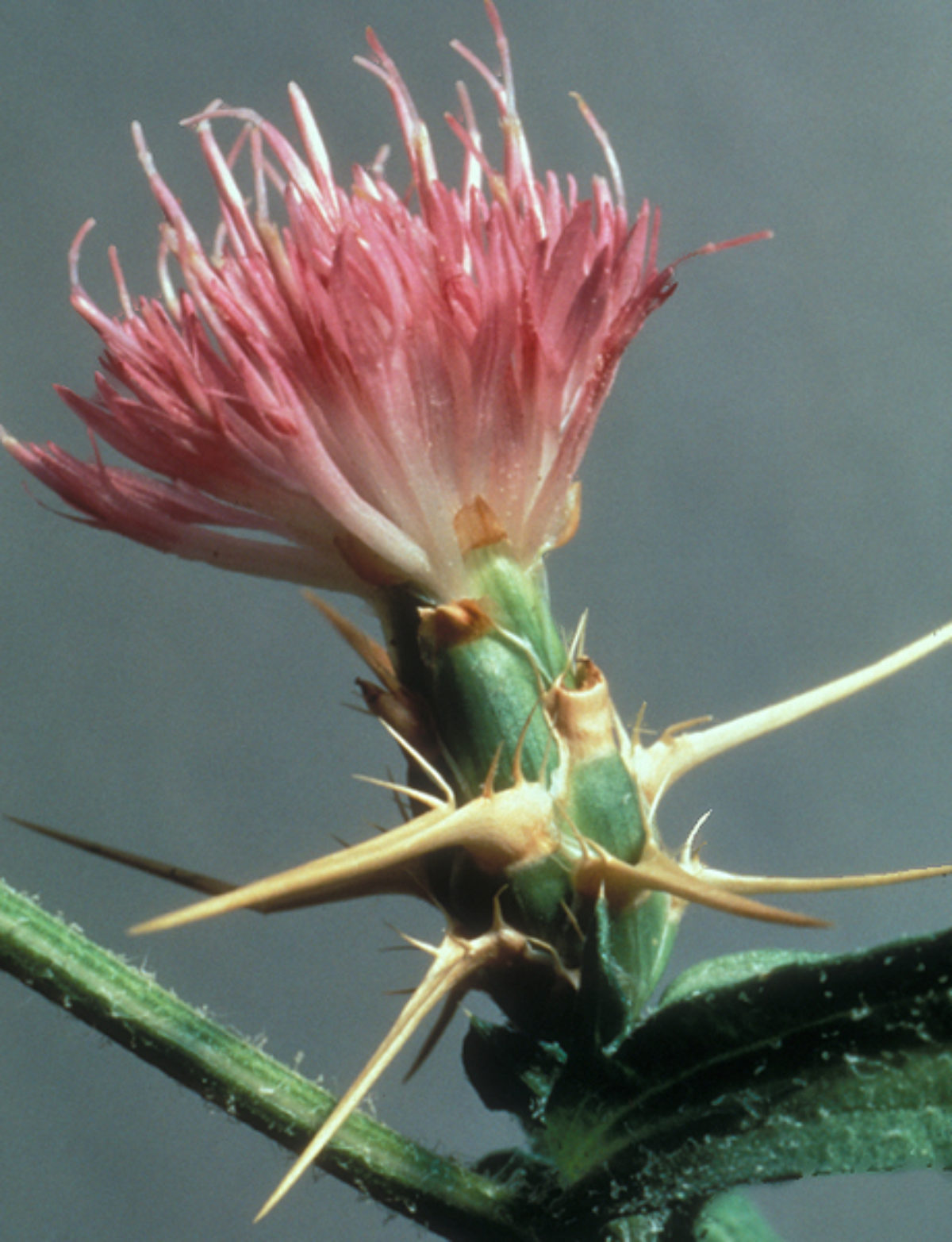
Family: Asteraceae
Weed class: A
Year Listed: 1989
Native to: Asia Minor from a region between the Black and Caspian seas
Is this Weed Toxic?:
not known to be
Legal listings:
This plant is also on the Washington State quarantine list. It is prohibited to transport, buy, sell, offer for sale, or distribute plants or plant parts of quarantined species into or within the state of Washington or to sell, offer for sale, or distribute seed packets of seed, flower seed blends, or wildflower mixes of quarantined species into or within the state of Washington. Please see WAC 16-752 for more information on the quarantine list. For questions about the quarantine list, contact the Washington State Department of Agriculture's Plant Services Program at (360) 902-1874 or email PlantServices@agr.wa.gov.
Why Is It a Noxious Weed?
Similar to yellow starthistle, this is an aggressive Centaurea, which is a major problem on annual rangelands in the San Francisco Bay area.
How would I identify it?
General Description
Upright branched annual, biennial or short-lived perennial plant growing up to 3.3 feet tall. It is covered with cobwebby hairs often becoming smooth with maturity.
Flower Description
Narrow flowerheads of lavender to deep purple flowers. Spine-tipped bracts subtend the flowerhead with some spines longer at 0.4 to 1.2 inches (1cm to 3cm).
Leaf description
Lower leaves deeply divided, upper leaves are narrow and undivided.
Stem description
Purple starthistle stems are branched and angled, not winged.
Fruit Seed Description
Purple starthistle seed is small (0.10 to 0.13 inches), white or brown streaked in color and hairless.
Where does it grow?
It can grow in fields, roadsides, disturbed areas, grasslands and overgrazed rangelands. Please click here to see a county level distribution map of purple starthistle in Washington.
How Does it Reproduce?
Purple starthistle reproduces by seed.
How Do I Control It?
Mechanical Control
Grubbing or digging can be effective for small infestations. Mowing is not effective.
Biological Control
No biological control program is currently being developed for purple starthistle.
Herbicide Control
Please refer to the PNW Weed Management Handbook, or contact your county noxious weed coordinator.
For More Information
See our postcard for early detection information about purple starthistle.
See our Written Findings for more information about purple starthistle (Centaurea calcitrapa).



